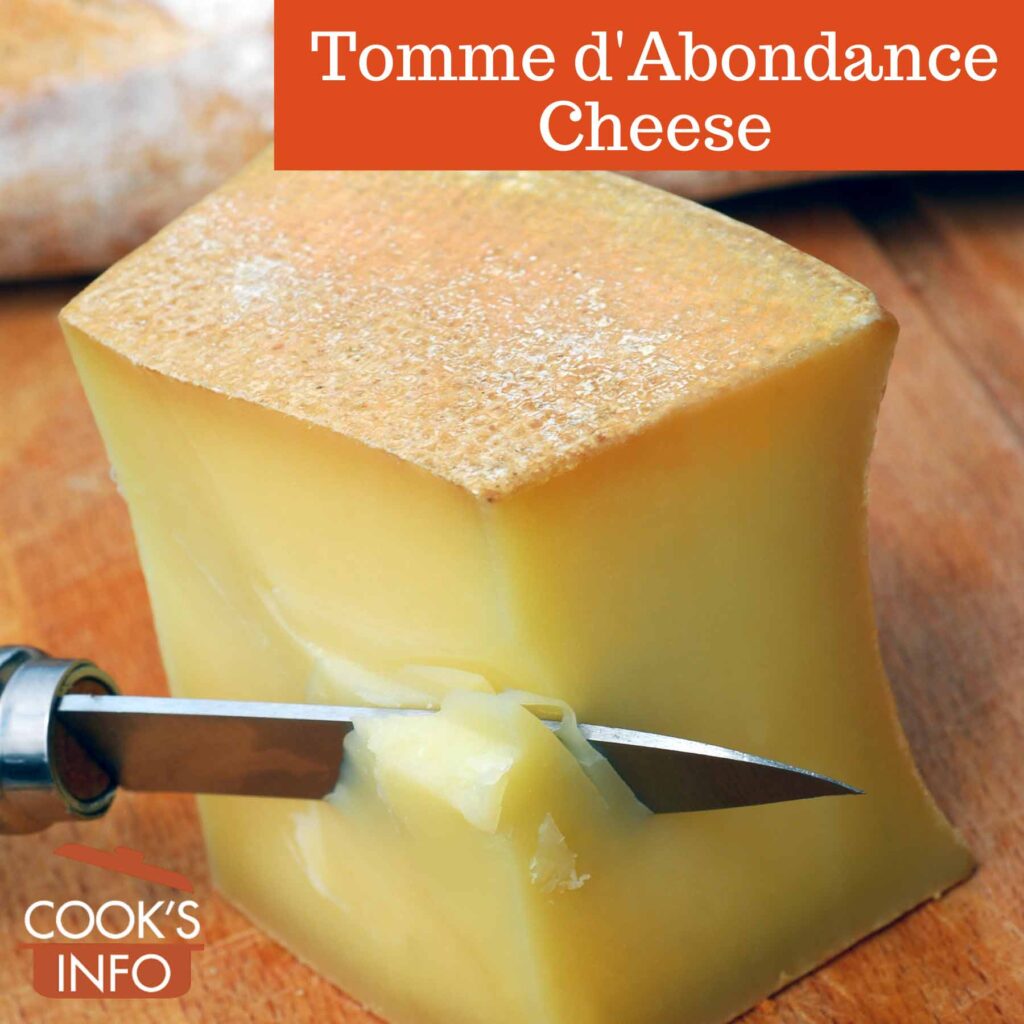Tomme d’Abondance (often just called “Abondance cheese”) is a firm, mild-flavoured cheese with a yeasty, fruity taste made in the Abondance Valley in the Haute-Savoie region on the border between Switzerland and France.
The wheel-shaped cheese is an ivory-yellow colour inside, with a slightly grainy, supple texture.
A blue label on each cheese identifies both the producer and the “method” of production — oval labels indicate artisanal (aka “farmhouse cheese“) producers; square ones indicate industrial producers.
Production
Tomme d’Abondance cheese is made from whole raw milk from “tarine”, “montbéliarde”, and “abondance” breeds of cows, from batches of milk from the morning’s milking, combined with those from the evening before.
10 litres of milk (2 ½ US gallons / 2 UK gallons) are needed to make 2 kg (2 ¼ pounds) of the cheese.
The milk is heated in a copper cauldron to 32 C (90 F) so as to heat the curd that forms without cooking it. The curd is then cut, drained, put in a round wooden mould and pressed for a day with a weight on it. It is salted either by hand or in brine.
The cheeses are then aged a minimum of 90 days to 6 months on spruce boards at a temperature of 12 C (54 F) and a humidity of 95%. They are brushed with brine and turned while aging.
The sizes of the cheese wheels range from 38 to 43 cm (15 to 17 inches) wide, and 7 to 8 cm (3 to 3 ½ inches) thick. Though the average weight is 3 kg (6 ½ pounds), the cheeses can weigh up to 7 or 8 kg (15 ½ or 17 ½ pounds).
The cheese used to be made only in the winter; in the summer, the milk from these cows was used to make Vacherin Mont d’Or. Now, it is made throughout the year to meet market demands.
Cooking Tips
Melts well.
Nutrition
Minimum 48% fat.
History Notes
Tomme d’Abondance was first made by monks at the “Abbaye d’Abondance” (Abondance Abbey), which in turn is named after the valley it is in.
In the late 1300s, the monks were the official supplier of cheeses to the Avignon popes.
The cheese has been reputedly made since at least 1381, based on a claim that it was served at Avignon in that year for a conclave that gathered there to elect a pope — but in 1381, there was no conclave to elect a pope either in Avignon or in Rome.
The cheese received its AOC on 23 March 1990.


